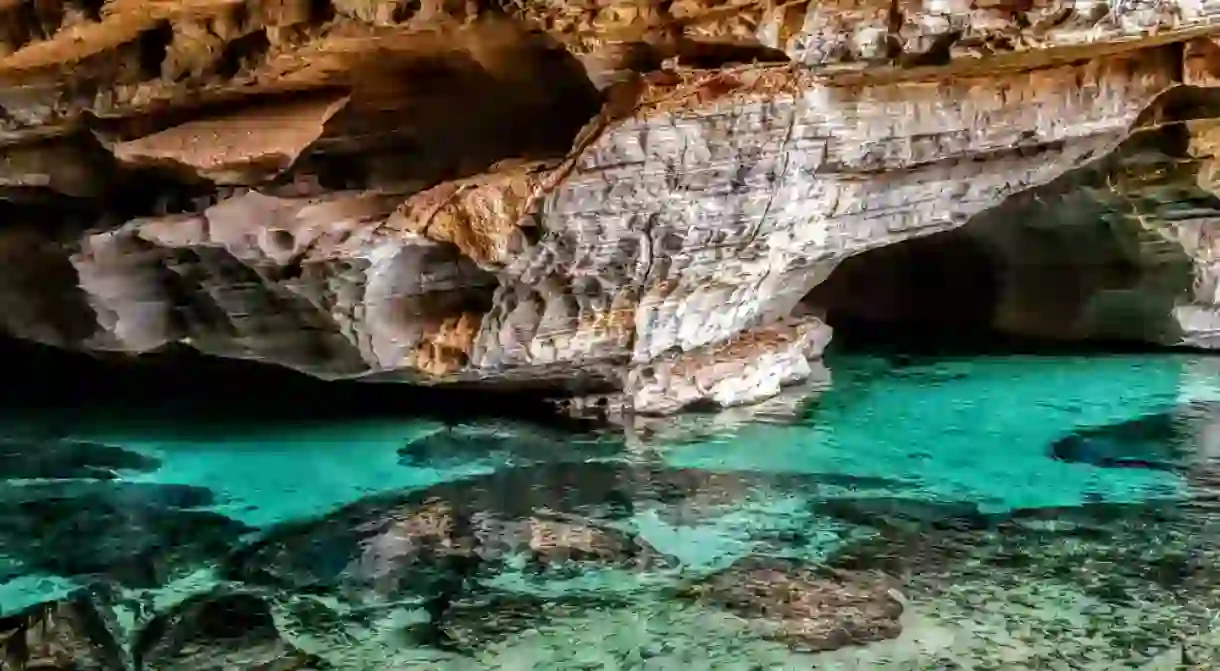The 10 Most Beautiful National Parks in Brazil

In between Brazil’s huge cities lies miles and miles of land representing a mix of sprawling farmland, mountain ranges, and mighty forests. There are currently 69 national parks in Brazil featuring impressive rock formations and an extraordinary collection of flora and fauna. Not all of the parks are open to the public but the ones that are open are worth exploring. Here are some of the most breathtaking national parks in Brazil.
Lençóis Maranhenses National Park, Barreirinhas
Park

Iguaçu National Park
Natural Feature

The most visited park in Brazil, Iguaçu straddles the borders of Brazil, Argentina, and Paraguay. It is famous for the huge expanse of waterfalls, one of the largest set of cascades in the world. Visitors can explore the waterfalls on foot by following the wooden decking that meanders on the edge of the falls or by taking a boat trip or helicopter ride. There is also a bird park which has several conservation projects and informs of local bird species.
Chapada dos Veadeiros
Park

Chapada Diamantina National Park
Park

Serra dos Órgãos National Park
Historical Landmark, Architectural Landmark, Natural Feature

The Serra dos Órgãos National Park is a large mountain range on the outside of Rio de Janeiro. The rocky peaks are carpeted in the Atlantic forest and are riddled with a series of challenging hikes. It’s a popular spot with mountaineers who enjoy the rock climbing opportunities coupled with breathtaking views. The park contains 10 peaks over 2,000 metres high and the most famous peak there is Dedo de Deus (God’s Finger), so called as it looks like a large finger pointing into the sky.
Jaú National Park
Historical Landmark, Architectural Landmark
Located in Amazonas in the northwest of Brazil, Jaú is the largest forest reserve in all of South America and is mostly made up of dense forest that is difficult to get through. Its land contains three major rivers – the Jaú river, the Unini river, and the Carabinani river – that flow into the Rio Negro. Over 400 species of plants have been cataloged here as well as over 260 species of fish, making it one of the most biologically rich areas in Brazil.
Anavilhanas National Park
Natural Feature

Consisting of important areas of the Amazon forest, the Anavilhanas National Park protects over 400 islands in the Rio Negro. As well as promoting sustainable tourism all year round, it is a critically important area of scientific research and conservation. The park contains several significant forest and lake ecosystems which support various extraordinary species of animals, including the giant otter, the Amazon river dolphin, the giant anteater, the jaguar, and the giant armadillo.
Pantanal Matogrossense National Park
Natural Feature

The largest and most famous wetland in the world, the Pantanal National Park is one of the most ecologically diverse regions in Brazil. Wildlife-lovers will be in their element in the Pantanal, with opportunities to spot incredible species such as black howler monkeys, tapirs, jaguars, and hundreds of caimans. There are several guided tours in this area as well as eco-lodges for sustainable accommodation options.
Itatiaia National Park
Natural Feature
The oldest national park in Brazil, Itatiaia is home to several of Brazil’s highest mountains. The two tallest peaks include Prateleiras and Agulhas Negras, the latter requiring mountaineering experience from those wanting to reach the top. With over 350 species of birds recorded here, it is a bird watcher’s dream spot for sightings of rare species.
Chapada dos Guimarães
Natural Feature

The Chapada dos Guimarães is rich in a diversity of natural attractions including several waterfalls, expansive canyons, and remarkable ecological diversity. One of its most notable features is the well-preserved cave paintings that remain inside some of the park’s cave. Resident wildlife includes anteaters, deers, and the elusive maned wolves.













